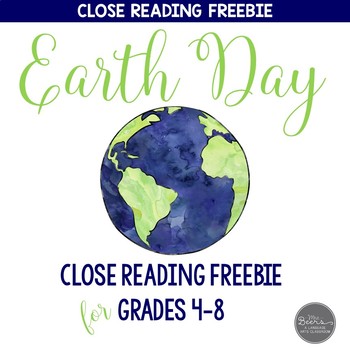- PDF
Description
Have you ever wondered how Earth Day began? I was curious, so I did a bit of research and created this Earth Day Close Reading Toolkit FREEBIE for my students and yours.
This Earth Day FREEBIE includes:
• an explanation of Close Reading for students
• Close Reading Strategies
• Directions for Classroom Use
• Earth Day Informational Text
• Reader Response Questions
• 3-Post-Reading Journal Prompts
• Answer Key
This resource comes with my Earth Day Reader's Theater and Informational Text Toolkit. If you don't have my Earth Day Reader's Theater, it is the perfect companion resource for paired readings.
For the perfect EARTH DAY resource, grab this...
• Earth Day Reader's Theater and Informational Text Toolkit
*********************************************************************
More ELA Resources from Mrs. Beers Language Arts Classroom:
- Reader's Theater for BIG KIDS MEGA BUNDLE
- Editable ELA Word Wall for Middle School
- ELA Emergency Sub Plans Bundle
- Monthly ELA Activities Bundle
- Context Clue Task Cards for Middle School
- Poetry Analysis Resource for Grades 4-8
*********************************************************************
I would love your feedback on this product. Also, feel free to FOLLOW me so that you have the chance to find out about any new novel units I create as soon as they are posted.
HAPPY READING!




